
If you were a pre-pubescent boy in the late seventies and early eighties, you’ll have had two posters on your bedroom wall. The first was a very attractive female tennis player nonchalantly scratching her bum.
The other was a red Lamborghini Countach.
And if you are now wealthy enough to be in a position to have bought the car of your childhood dreams, the chances are that you did so in the hope that someone who looks just like her will overlook your male pattern baldness, incipient beer belly and luxuriant ear hair and climb into the passenger seat.
(*spoiler alert* She won’t.)
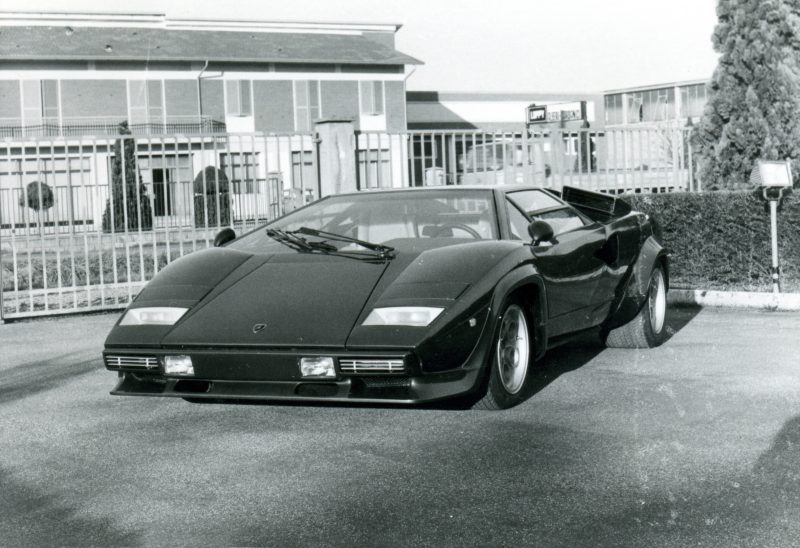
History
Styled by Marcello Gandini, the Countach is named after Bertone’s exclamation of surprise, literally ‘heavens!’, when he first saw it. Which is pretty cool but then the Countach might well have been the world’s first supercar, which is also very cool.
Launched in 1974, the Countach turned the Muira’s delicate, almost feminine styling on its head, substituting finesse for in-your-face; if the Muira is Bridgette Bardo cooing seductively in your ear, the Countach is Ron Jeremy thrusting in your face. Grunting.
Which must have been deliberate. After all, no one could ever have looked at the Countach’s lines and thought it was anything other than brash; the low, cab-forward design, coupled with a pair of scissor doors, is utterly unlike anything else, either before or since, and that’s not meant as a compliment.
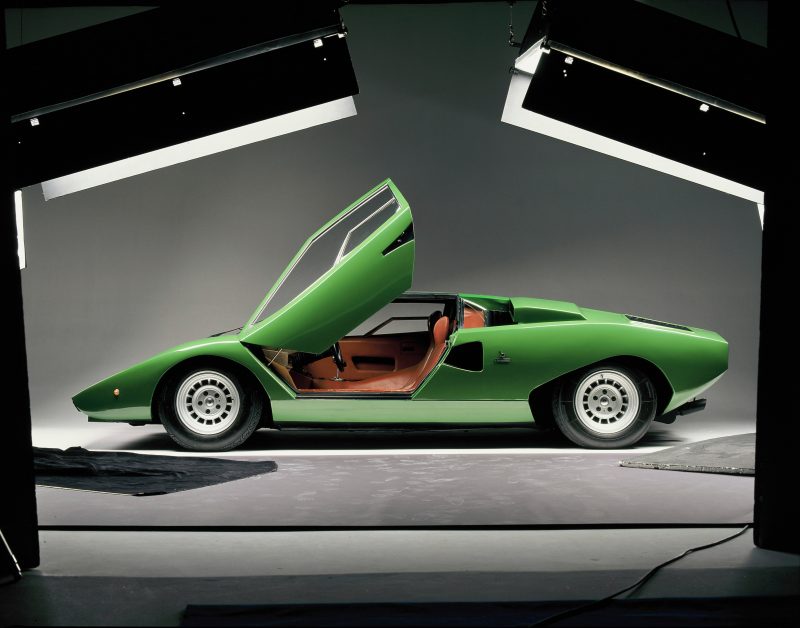
It was a misleading shape too, being much shorter (4.1m) than it looks – and much wider: with an overall width of two metres, it is twice as wide as it was tall, which means that city driving is all but impossible unless you’re wealthy enough not to have to worry about the inevitable scrapes and dents.
While the early cars might not have been known for their modesty at the time, the Countach grew inexorably over the years until it was a parody of itself, becoming evermore bloated by a myriad of ducts, wings and spoilers. By the time production ended in 1990, it was the automotive equivalent of The Expendables 3.
There is, however, no denying that the Countach is quick. The first of the breed, the LP400 – affectionately called the Perescopo due to its small ‘spy hole’ in the roof to help the driver see what was happening behind him – is fitted with a 4.0-litre V12 engine that develops 370bhp and 330lb/ft of torque. The engine, fitted north/south and with the gearbox in front of it, necessitating a driveshaft through the block to get the power to the rear differential, enables it to reach 62mph in about six seconds on its way to a top speed of more than 170mph. Which is heady stuff, even now.
One hundred and fifty-one found owners worldwide, making them the rarest model of them all.
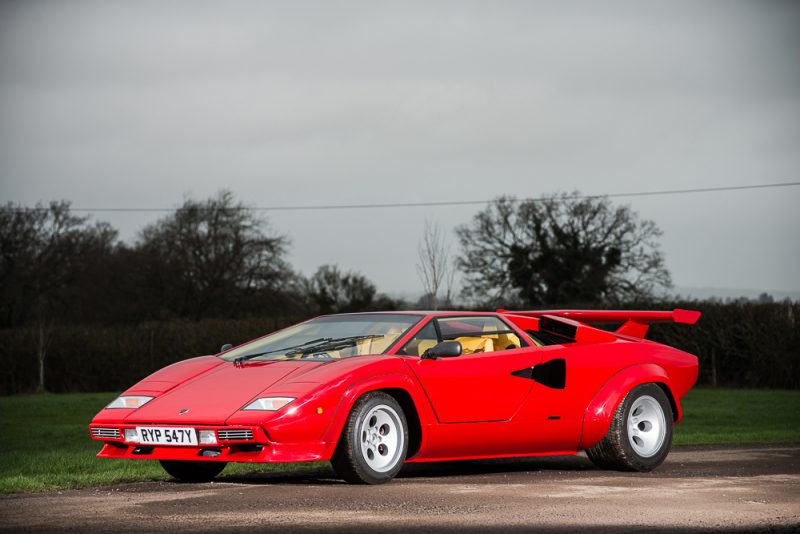
copyright: Silverstone Auctions
The LP400S of 1978, fitted with wider wheels that were shod with the now legendary Pirelli P7 high-performance tyres, also boasts flared wheelarches, uprated suspension, and much better brakes. It doesn’t have any more power though and the poorer aerodynamics meant that it is actually slower than the car it replaced, especially when gullible owners ordered the enormous rear wing. Most did, of course, and the rot had started; style was now more important than substance and the Countach slipped and stumbled down the greasy path that would lead eventually to the 25th Anniversary model. Nonetheless, 235 found owners willing to trade speed for chic.
Next came the LP500S, introduced in time for the 1982 model year. Lamborghini, presumably embarrassed at the LP400S’ retrograde performance, slotted in a 4.7-litre engine that produced 375bhp but is, crucially, channelled to the rear wheels via revised gearbox ratios, restoring at least some of the missing top-end performance.
Just 323 LP500S models were built.

copyright: Historics at Brookland
The LP500 Quattrovalvole, or QV, appeared in 1985. Featuring a bored and stroked, four-valve-per-cylinder 5.2-litre engine that produces 455bhp and 369lb/ft of torque, it is said to be legendary Lamborghini test driver and all-round good bloke Valentino Balboni’s favourite version. Six hundred and ten left the factory in all.
The 25th Anniversary Countach, with 658 built is the best-selling Countach of them all, as well as the fastest, most vulgar and inevitably the one collectors covet the most today if they can’t stretch to a Perescopo. The strakes, ducts, spoilers, fins and flares are doted about the place seemingly at random and the end result is striking but not necessarily attractive. To be fair, it does have a much better interior than anything that had gone before since the very earliest LP400.
Lamborghini had finally found its place in the world with the Anniversary Countach, but sadly that place was supplying oligarchs, minor Arabian royalty and third-world dictators with the automotive world’s equivalent of a gold-plated sex toy.
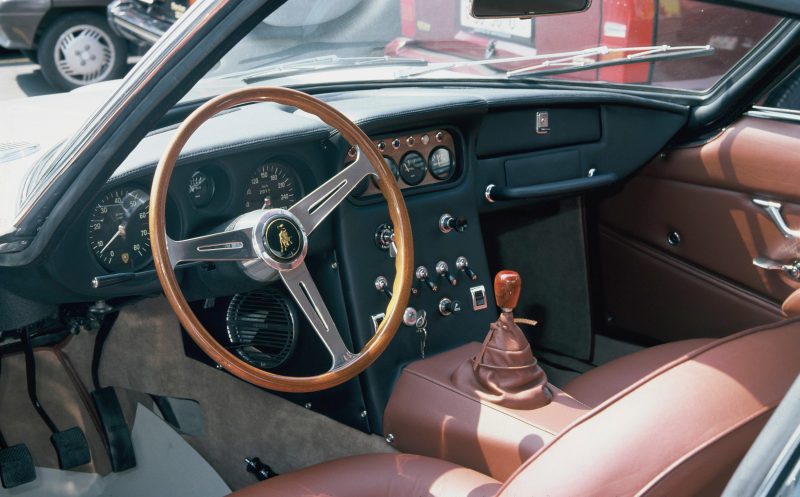
Driving one
Getting into, and then comfortable within, a Countach is the first challenge and if you’re tall, portly and/or not as nimble as you used to be then it’s not going to be a dignified process.
Once safely strapped in (and probably shoeless if you’ve got proper, man-shaped feet) the Countach drives exactly as you might expect, being heavy, awkward, and almost impossible to enjoy as you spend the whole time trying to see out of the bloody thing. And that’s after it’s warmed up; the Weber carbs splutter and cough and hesitate until they’re warm, something enthusiasts call ‘character.’ Everyone else wonders why Lamborghini kept fitting carburettors long after the world had moved on to fuel injection…

Driving in the city is, of course, an absolute nightmare. To save accusations of bias, here is Auto Express on the LP500QV:
“Before setting off, you’d better make sure you’re in good physical shape, because getting the Countach moving requires serious muscle. Unlike the Aventador, which is as effortless to drive as a supermini, the older car will have you sweating profusely before you’ve even got out of first gear thanks to its unassisted steering, weighty clutch and clunky gearshift.
“Factor in the appalling rear visibility, breathless air-conditioning and letterbox-sized side windows, and this Lamborghini proves to be an energy-sapping companion on crowded city streets.”
(You’ll also be distracted and appalled in equal measure by the interior if you’re driving a Countach from the eighties. While the earlier cars have a real period charm to them, the quality of the later ones would be below par in a home-built kit-car from the sixties. The one I drove had easily the worst interior I have ever seen in a car with seriously low-rent materials, whopping panel gaps, and a fit and finish that is beaten by that of a Cozy Coupe… And that’s without even mentioning the extra radio console, as fitted to Harry’s car.)
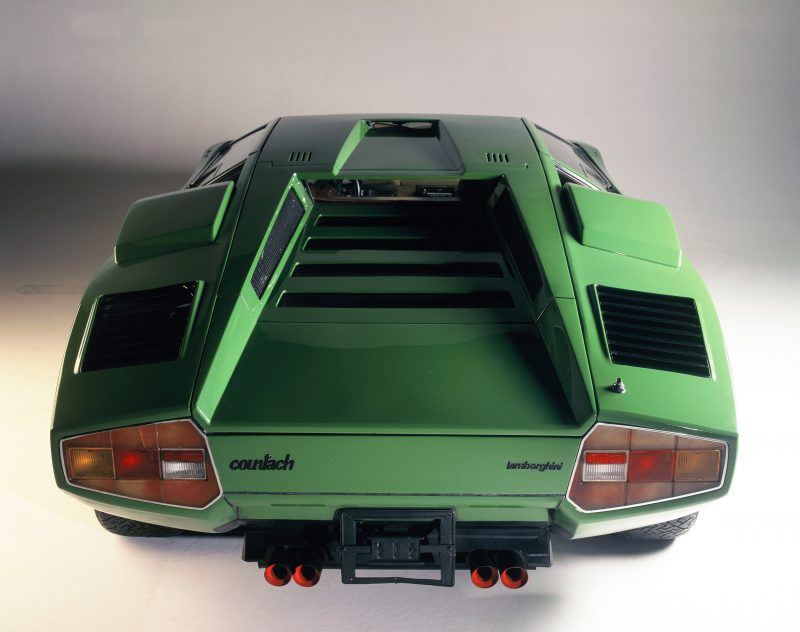
But things get a bit better on the open road, at which point the worries you had about not being able to see out of it start to be edged aside by the worry that you’re going to stuff it in a hedge. More talented drivers than me might be able to talk about dancing a Countach along the ragged edge, but I couldn’t help thinking that the almost inert steering and chassis would give me bugger all warning if/when it was about to let go.
It’s fast though, I’ll give it that. Sounds good too, and comes to a halt in a not-very-inspiring-but-ultimately-acceptable way. Spearing along a motorway or autoroute is enormous fun, but then the engine, wind and tyre noise start to get on your nerves and the fuel consumption means that you end up stopping far more frequently than you’d like and then you hit traffic again and start to worry that everyone thinks you’re the biggest cock they’ve seen all year, so you return the car to its generous owner and mumble something along the lines of ‘thanks, it’s been a lifetime dream come true’ as you hand over the keys and think – but don’t say, of course – that you really shouldn’t meet your heroes.
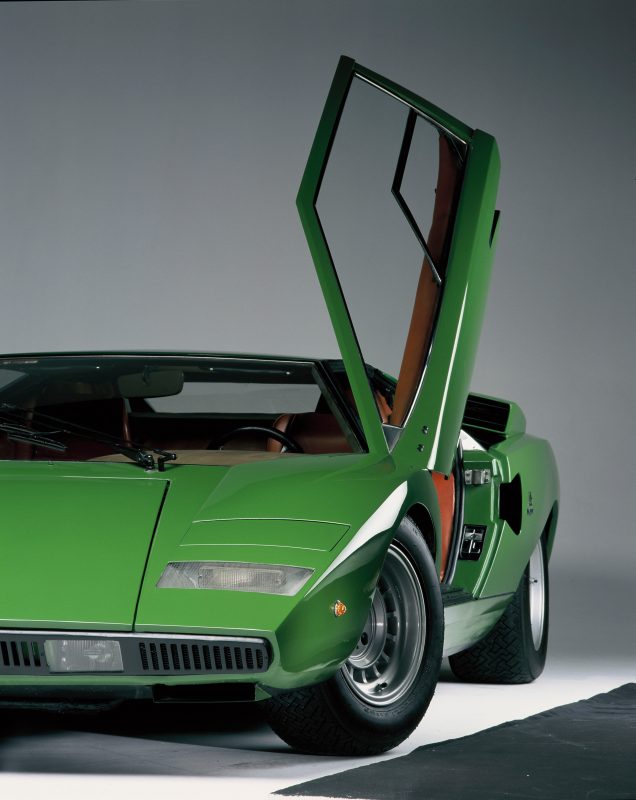
Buying one
With prices nudging way north of a quarter-of-a-million pounds, the chances are you’re going to be in a position to get a specialist to give it the once over before handing over your money but, just in case, here’s what you should know.
The V12 engine is tough and pretty much bulletproof as long as it has been serviced on time and had regular oil and filter changes using semi-synthetic oil. However, the valve clearances need checking every 15,000 miles and as the carbs need to come off to do it, it ends up being a two-day job. This means that even the most diligent owners have been known to skip this crucial bit of maintenance as a result…
The tubular spaceframe is cloaked with a variety of aluminium, steel, kevlar or fibre-glass panels depending on its year and specification. This means you’re going to need to ask your man to go over it with a fine-tooth comb to establish just how bad the accident(s) in its past were. Because, just like your wife, every Countach has a past and while you might not want to hear about either, forewarned is forearmed. This of it as a pre-nuptial agreement for a car.
Panel gaps were reasonably tight from the factory as everything was hand-fettled to fit, but no-one paid too much attention as to whether the left-hand and right-hand sides were symmetrical. So, while every panel is still available new you don’t need me to tell you that replacement panels are going to be hideously expensive to buy and fit, do you?
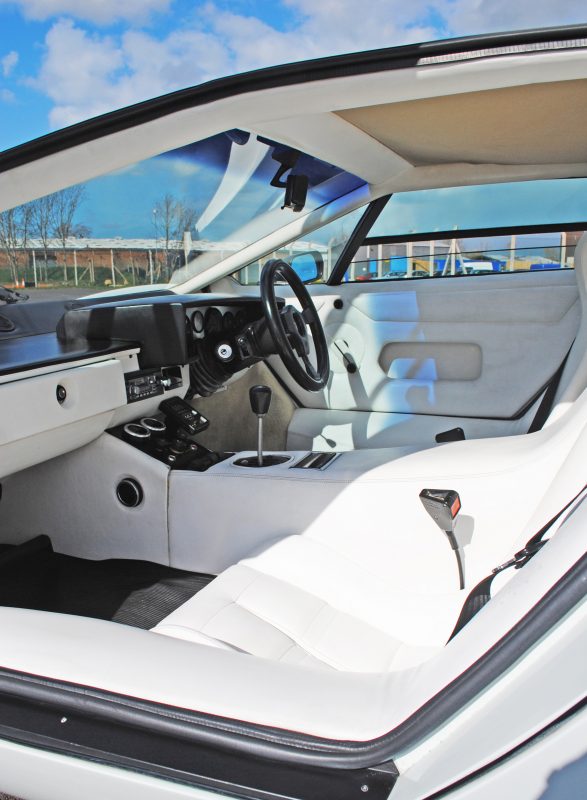
copyright: Historics at Brooklands
The rear suspension is as complex as the spaceframe, having no fewer than eight rose-joints on each side, and is as difficult and time-consuming to overhaul as the valve clearances; the car will announce its need for a rebuilt rear end by handling badly and making lots of unpleasant knocking noises. Of course, this can be cured. But it’ll cost you at least £2,000.
Finally, the interior is probably going to be a bit of a let-down unless you spent a couple of decades driving BL’s finest, in which case it’ll only be a mild disappointment. As I might have mentioned before, the fit and finish is atrocious but as long as everything is there a decent trimmer could probably make it look half decent for a couple of thousand pounds. As long as you haven’t got that bloody awful extra radio console, in which case you’re fubar’d.
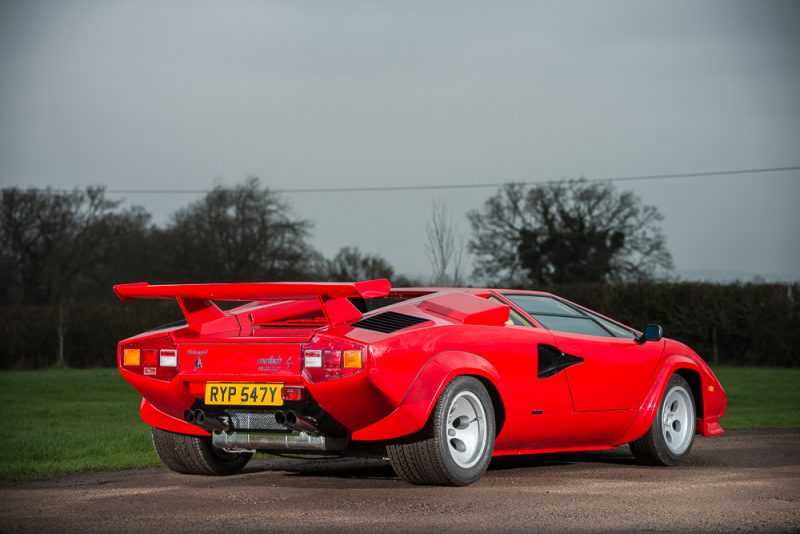
copyright: Silverstone Auctions
Running one
It’s worth spending the time and money to service your Countach properly as a full engine rebuild will set you back the thick end of £20,000. Similarly, a full gearbox rebuild will be low five figures and you’ll be lucky if the clutch lasts 20,000 miles, at which point you’re looking at another £5,000 bill.
All this means that you’re better off buying a more expensive car that has been used regularly and is supported by a couple of hefty folders’ worth of paperwork. It’s always cheaper in the long term to buy the very best supercar you can in the first place, rather than trying to save a few quid on the upfront cost.

What to pay
The early Perescopo cars are anywhere between £750,00 and a million pounds these days, but if you’re a wealthy purist then you’re going to willingly hand that over and just be glad you managed to find one in the first place.
The others will be between £250,000 and £400,000 depending on condition and mileage. Not bad for a car that could be snapped up for well under £100,000 a few years ago, eh?

copyright: Classic Car Auctions
Kit cars
The world of the Lamborghini Countach kit-car used to be a bit of a joke, but given how expensive the real thing is now they’re starting to come into their own for enthusiasts with shallow pockets or even owners that don’t want to risk using the real thing on a regular basis.
As ever, the world is full of both good and bad examples from a variety of manufacturers, many of whom took the Lamborghini approach to quality control and just knocked ‘em out as fast as they could.
However, a Dave Shorts’ 5000S Evocation with a Lexus 4.0-litre V8 that gives it a similar power-to-weight ratio to that of a genuine car, sold recently at auction for a fraction over £50,000, which proves that their time might just have come.
Carlton Boyce